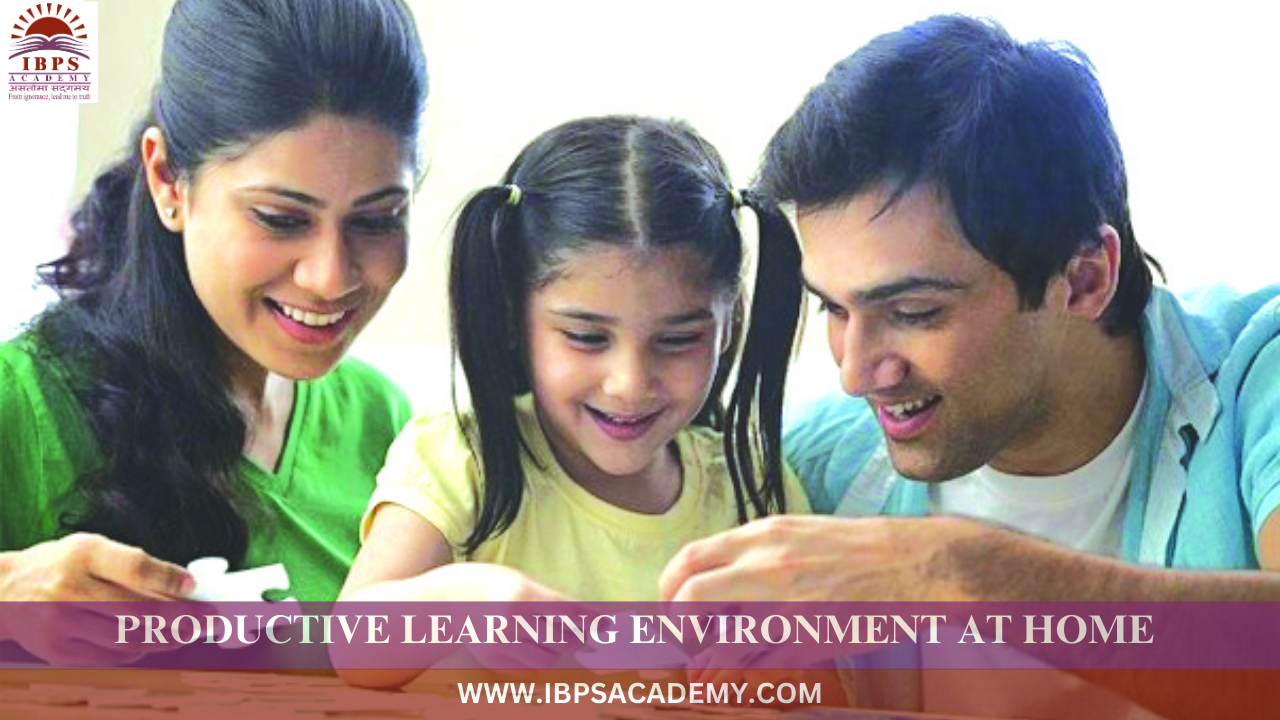PRODUCTIVE LEARNING ENVIRONMENT AT HOME
Published on: Dec 24, 2024
PRODUCTIVE LEARNING ENVIRONMENT AT HOME
Creating a productive learning environment at home involves setting up a space that encourages focus, organization, and comfort, all while minimizing distractions. Here are some strategies to achieve this:
1. Designate a Learning Area
- Separate Space: If possible, choose a specific room or corner of a room that’s used only for studying or learning activities. This helps signal to the brain that it’s time to focus.
- Quiet and Comfortable: Ensure the space is quiet, well-lit, and comfortable. Avoid areas that are too noisy or associated with other activities (like watching TV).
2. Organize Learning Materials
- Storage Solutions: Use shelves, bins, or drawers to store books, supplies, and papers. Keeping everything organized makes it easier to find what’s needed and reduces clutter.
- Easy Access to Tools: Keep essential tools like pens, notebooks, and computers within easy reach to minimize distractions from searching for materials.
3. Comfortable Furniture
- Ergonomic Chair: Invest in a comfortable chair with good back support to avoid discomfort during long study sessions.
- Proper Desk: Ensure that the desk or table is at the right height for writing or using a computer, with enough space for all necessary materials.
4. Good Lighting
- Natural Light: If possible, set up your learning space near a window to benefit from natural light, which can improve mood and focus.
- Task Lighting: Use adjustable lamps for focused tasks to avoid eye strain during reading or writing.
5. Limit Distractions
- Digital Distractions: Encourage minimizing phone use and unnecessary apps or websites. Use tools like website blockers if needed.
- Noise Control: If your home is noisy, consider using noise-canceling headphones or playing soft instrumental music to help concentration.
6. Establish a Routine
- Set a Schedule: Establish consistent times for learning and breaks. This helps create a rhythm and encourages a sense of productivity.
- Breaks: Encourage short, regular breaks to prevent burnout and help maintain focus.
7. Motivational Visuals
- Inspiring Decor: Include motivational quotes, a vision board, or other inspiring visuals that help foster a positive learning mindset.
- Clear Goals: Write down short-term and long-term goals in the learning space. This reminds students of their objectives and keeps them focused.
8. Incorporate Technology Wisely
- Reliable Internet: Ensure a stable internet connection for online learning or research. Slow or interrupted internet can lead to frustration.
- Tools & Resources: Use educational apps or websites to enhance learning, but balance screen time with traditional learning methods like reading books or writing.
9. Create a Positive Atmosphere
- Personalization: Allow the space to feel personal, whether that’s through comfortable touches like a cozy blanket or a favorite chair.
- Encouragement: Be supportive, provide positive reinforcement, and celebrate progress.
CONCLUSION:
By combining these elements, we can create an environment at home that fosters focus, creativity, and productive learning.


